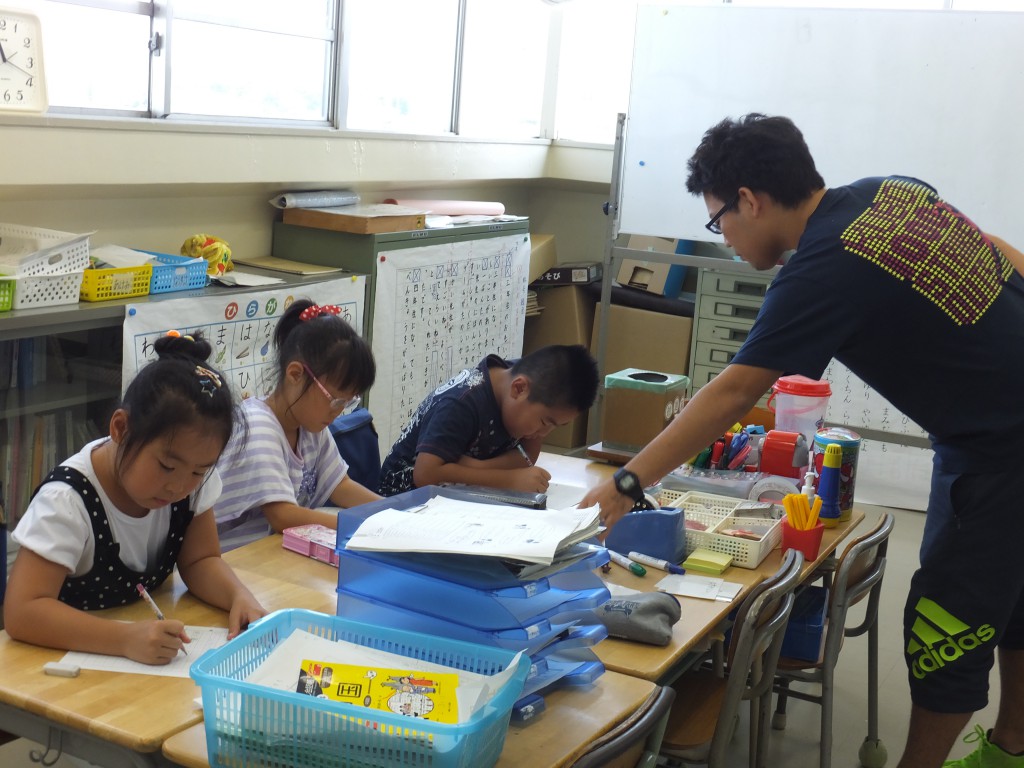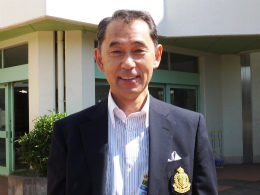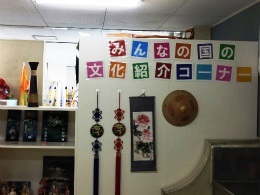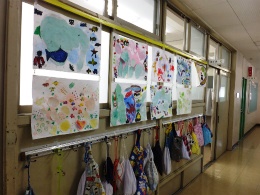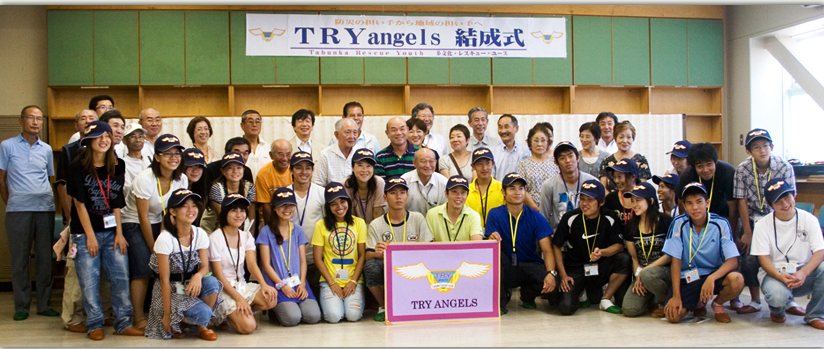実施日 : 2015年10月23日(金)
Notice: Yokohama Press Tour “Working towards a Multinational Society”
投稿日 : 2015年10月08日
-An apartment complex with residents from about 10 countries, such as refugees from Vietnam
-An elementary school where over half the students have roots in other countries
-An elderly nursing home with eight foreign care staff
Japan, as an island country that had periods in its history where contact with other cultures was limited, has an extremely homogeneous society. When compared to other advanced countries, multinational communities are less common. The Japanese language is also often a major issue for people living in Japanese society when it is not their first language.
However, as of the end of 2014, the number of foreign nationals living in Japan was over 2.12 million. This is an increase of 55,000 (2.7%) since the previous year, and living in harmony with people of multiple cultures and nationalities is likely to become more and more important in the future.
Example of an Area Working to Live in Harmony
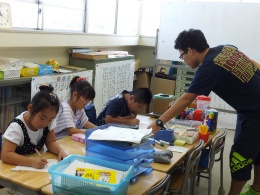 When considering how people with different cultural backgrounds can live in harmony in Japan’s highly homogenous society, Yokohama provides one important example. In Izumi-ku, Yokohama, there is one area where the number of foreign residents has been increasing for over 20 years. The large-scale public housing complex Icho Danchi has residents from approximately 10 countries, and over 20% of the around 2,100 households living there are non-Japanese households. Starting in the 1980s, refugees from Vietnam and the rest of Indochina settled there permanently, and with others such as Japanese orphans left behind in China and their families, as well as Brazilians of Japanese ancestry and Peruvians, people with diverse cultural backgrounds have gathered there. At one nearby elementary school, children with roots in other countries account for over half the students. In this area, residents, the elementary school, and local volunteer groups work together to try to build a community together with people of different cultures and languages.
When considering how people with different cultural backgrounds can live in harmony in Japan’s highly homogenous society, Yokohama provides one important example. In Izumi-ku, Yokohama, there is one area where the number of foreign residents has been increasing for over 20 years. The large-scale public housing complex Icho Danchi has residents from approximately 10 countries, and over 20% of the around 2,100 households living there are non-Japanese households. Starting in the 1980s, refugees from Vietnam and the rest of Indochina settled there permanently, and with others such as Japanese orphans left behind in China and their families, as well as Brazilians of Japanese ancestry and Peruvians, people with diverse cultural backgrounds have gathered there. At one nearby elementary school, children with roots in other countries account for over half the students. In this area, residents, the elementary school, and local volunteer groups work together to try to build a community together with people of different cultures and languages.
Example from Nursing Care Industry
With the aging population and decreased birth rate contributing to an increasingly severe lack of nursing care personnel, in Yokohama there is one of leading examples of foreign staff working in the nursing care industry who have come to Japan under an Economic Partnership Agreement (EPA).
-----------------------------------------------------------------------------------------------------
I. This press tour will visit Izumi-ku, Yokohama as an example of an area working to live together in harmony. The tour will visit Icho Danchi, with its multinational residents; an elementary school where over 50% of the students have roots in foreign countries; and volunteer group that operates at the grassroots level to bring together foreigners and Japanese society.
II. As an example from the nursing care industry, the tour will visit a special elderly nursing home in Hodogaya-ku, Yokohama where foreign nursing care staff are working.
-----------------------------------------------------------------------------------------------------
* This press tour is sponsored by Yokohama City, and planned and operated by the FPCJ.
[Tour Details]
[1] Regional Examples: Over the Course of 20 Years, Searching for a Way for People of Multiple Nationalities to Live Together
1. Public Housing with People from 10 Different Countries Living Together
Kanagawa Prefectural Government Icho Danchi
・Residents’ association members
・Residents
http://www.city.yokohama.lg.jp/izumi/02suishin/01kouhou/izumikuban/h27kouyoko/1-27/ichodanchi.html
Increased multinationalism since the 1980s as refugees from Indochina and Japanese orphans left behind in China moved into the housing complex along with their families.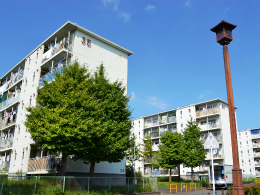
Icho Danchi (located in Izumi-ku, Yokohama) is the largest public housing complex operated by the prefectural government in Kanagawa. Of its approximately 2,100 households, over 20% are said to be foreign households, consisting of people from about 10 countries including Vietnam, Cambodia, China, Laos, Indonesia, and Brazil.
Icho Danchi was built in 1971, as the Japanese population increased during the postwar economic miracle. Foreigners first started living here in the 1980s. This began with the establishment of the Yamato Resettlement Promotion Center in the nearby city of Yamato, made to support resettlement by refugees from Vietnam, Laos, and Cambodia.
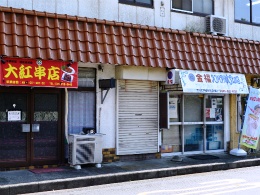 Around the end of the Vietnam War in 1975, new communist governments were established in the three Indochinese states (Vietnam, Laos, and Cambodia), and many people fled these countries as refugees. Many came to Japan as “boat people” from the mid-1970s to the early 1990s, reaching a peak with 1,278 people arriving in 1980. One way the Japanese government provided aid was with the establishment of the Yamato Resettlement Promotion Center. Refugees could stay at the center for half a year, receiving support in studying Japanese and finding work, and from its establishment in 1980 until its closing in 1998, over 2,600 refugees went through the Center. The refugees who trained at the Center and their families then went on to live at the nearby Icho Danchi.
Around the end of the Vietnam War in 1975, new communist governments were established in the three Indochinese states (Vietnam, Laos, and Cambodia), and many people fled these countries as refugees. Many came to Japan as “boat people” from the mid-1970s to the early 1990s, reaching a peak with 1,278 people arriving in 1980. One way the Japanese government provided aid was with the establishment of the Yamato Resettlement Promotion Center. Refugees could stay at the center for half a year, receiving support in studying Japanese and finding work, and from its establishment in 1980 until its closing in 1998, over 2,600 refugees went through the Center. The refugees who trained at the Center and their families then went on to live at the nearby Icho Danchi.
During the 1980s, there was also an increase in repatriation by Japanese orphans left behind in China who were raised there (Japanese who were unable to return to Japan during the chaos near the end of World War II. Many were children at the time), and these people and their families also moved into Icho Danchi. Brazilians and Peruvians of Japanese ancestry who came to work at automobile factories in the surrounding area joined as well. Within and nearby the complex, there are some stores selling Southeast Asian groceries and other goods to meet the needs of foreign residents.
Moving forward through trial and error to live in harmony with residents of multiple nationalities
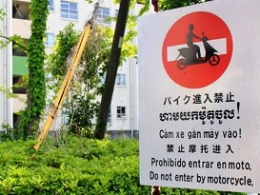 At first, there was a gulf between the Japanese residents and the new foreign residents, as they made few attempts at communication due to differences in cultures and lifestyle habits. In particular, the language barrier was a major problem to communication. There were many problems due to the foreign residents not understanding Japanese, such as with traffic regulations and rules for separating garbage. As the results of trial and error, information is now provided in multiple languages, with the rules for separating garbage now displayed in six languages within the housing complex, and a manual on daily living provided in eight languages. As the result of years of invitations by the residents’ association and a local volunteer group, foreign residents also participate in community activities such as festivals and cleaning the housing complex grounds. Foreign residents also participate in the residents’ association broadcast made within the housing complex, which is now done in four languages.
At first, there was a gulf between the Japanese residents and the new foreign residents, as they made few attempts at communication due to differences in cultures and lifestyle habits. In particular, the language barrier was a major problem to communication. There were many problems due to the foreign residents not understanding Japanese, such as with traffic regulations and rules for separating garbage. As the results of trial and error, information is now provided in multiple languages, with the rules for separating garbage now displayed in six languages within the housing complex, and a manual on daily living provided in eight languages. As the result of years of invitations by the residents’ association and a local volunteer group, foreign residents also participate in community activities such as festivals and cleaning the housing complex grounds. Foreign residents also participate in the residents’ association broadcast made within the housing complex, which is now done in four languages.
◆The tour will visit Icho Danchi and speak with residents and members of the residents’ association about initiatives to live in multicultural harmony. The tour will also visit a store inside the complex selling Southeast Asian groceries.
2. Elementary School Where Over Half the Students Have Roots in Other Countries
Yokohama Municipal Iidakita Icho Elementary School
・Principal, Hidehito Tanaka
http://www.edu.city.yokohama.jp/sch/es/iidakitaicho/
While the overall number of students at the elementary school is decreasing, the number of foreign students is increasing
At Iidakita Icho Elementary School, attended by foreign children from Icho Danchi and the surrounding area, 141 (44%) of the school’s 320 students are foreign nationals. Including 26 students with foreign roots who obtained Japanese citizensship, 52% of all the students have some connection to foreign countries. Children from seven countries all study together here: Japan, Vietnam, China, Cambodia, Laos, Brazil, and Thailand. The overall number of students at the elementary school is decreasing with the decreased birth rate of Japan, but the number of foreign students is increasing.
Education for children of different nationalities and languages
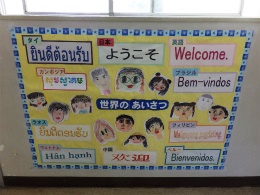 Of the students with foreign roots, there are many who cannot carry out conversations or study in Japanese. There are also many cases where the parents are less capable at communicating in Japanese than their children. The school has been dealing with these issues for the past 20 years. Since even the students born in Japan who can speak conversational Japanese often lack the vocabulary necessary for studying and fall behind in class, currently Iidakita Icho Elementary School divides students into four to five groups based on their Japanese level for Japanese and mathematics classes. By reducing the number of students, it is possible to spend more time with each student. There are also interpreters and volunteers available to provide support in foreign languages. There are also some students who, due to communicating in Japanese most of the time, forget their first language and have difficulties communicating with their parents at home, so a Vietnamese class is available to deal with this issue.
Of the students with foreign roots, there are many who cannot carry out conversations or study in Japanese. There are also many cases where the parents are less capable at communicating in Japanese than their children. The school has been dealing with these issues for the past 20 years. Since even the students born in Japan who can speak conversational Japanese often lack the vocabulary necessary for studying and fall behind in class, currently Iidakita Icho Elementary School divides students into four to five groups based on their Japanese level for Japanese and mathematics classes. By reducing the number of students, it is possible to spend more time with each student. There are also interpreters and volunteers available to provide support in foreign languages. There are also some students who, due to communicating in Japanese most of the time, forget their first language and have difficulties communicating with their parents at home, so a Vietnamese class is available to deal with this issue.
According to Mr. Tanaka, the school principal, “I believe Japanese children will also work overseas and work with foreigners more often in the future. Experiencing life in a multicultural society will benefit all the children.”
◆The tour will visit Iidakita Icho Elementary School, and hear from Mr. Tanaka about issues in teaching children of multiple nationalities and languages, and the measures taken to solve these issues. The tour will also visit a classroom, and observe a class with multinational students.
3. Grassroots Activities to Bring Foreigners and Japanese Society Closer Together
Tabunka Machizukuri Kobo, Volunteer Organization
・Director, Hideki Hayakawa
・Vietnamese interpreter, Nguyen Phan Thi Hoang Ha
Providing Japanese classes, supplementary lessons for children and consultations
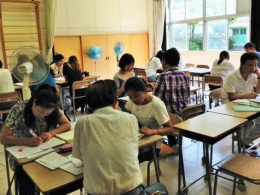 Based right by Icho Danchi, the volunteer organization Tabunka Machizukuri Kobo provides support for foreign residents to live in Japanese society. Mr. Hayakawa, the organization’s director, first started a Japanese class for Japanese orphans left behind in China that had repatriated to Japan when he was an university student, and has continued his activities in the area for approximately 20 years.
Based right by Icho Danchi, the volunteer organization Tabunka Machizukuri Kobo provides support for foreign residents to live in Japanese society. Mr. Hayakawa, the organization’s director, first started a Japanese class for Japanese orphans left behind in China that had repatriated to Japan when he was an university student, and has continued his activities in the area for approximately 20 years.
In addition to providing Japanese lessons for adults, the organization provides supplementary lessons and career counseling for children, as well as providing interpreters for the school and the residents’ association. They also respond to questions from foreign residents regarding a variety of topics, such as explaining documents from the school or government, or explaining legal procedures for marriage or divorce. They handle 1500 of these consultations a year.
The organization has also translated signs and pamphlets for Icho Danchi, cooperated with the residents’ association to provide multilingual announcements, and worked to encourage communication with Japanese residents.
Their efforts to create a place where foreign residents and children could feel like they belong and develop new community connections were recognized, and last year the organization received the Furusatozukuri Award from the Minister of Internal Affairs and Communications.
Youth with foreign roots who grew up in Icho Danchi contributing to multilingualism and disaster prevention
In 2010, the disaster prevention group “TRY angels” was also started, with its members mainly youth with foreign roots who grew up in Icho Danchi. Its members take courses in first aid, and participate in local disaster drills. The group has also made a disaster prevention pamphlet and a first aid leaflet written in six languages. These youths who grew up in Icho Danchi and can understand both Japanese and another language, are fulfilling an important role by bridging the gap between languages. One member is Nguyen Phan Thi Hoang Ha, who came to Japan at the age of ten along with her parents as a refugee from Vietnam. With the support of Tabunka Machizukuri Kobo, she worked hard on studying and learning Japanese, and is now an important asset to the community as an interpreter for this group.
◆The tour will hear from Tabunka Machizukuri Kobo’s director Mr. Hayakawa and interpreter Ms. Ha about the organization’s activities. The tour will also observe a Japanese class for foreign residents.
[2] An early nursing care example:
Foreign care workers, as the labor shortage worsens
4. Elderly nursing home with Eight Foreign Workers
Special elderly nursing home, Yotsuba-en
http://fuku-ikuseikai.com/yotsubaen.html
・Yotsuba-en, Facility Head (Ikuseikai Social Welfare Corporation, Vice-President) Yoshihiko Usui
・Filipino care worker, Alexander de la Cruz; other foreign staff
Accepting foreign care workers under an EPA
 As the population ages and the birthrate declines, Japan faces a particular shortage in the field of nursing care. Meanwile, based on an Economic Partnership Agreement, a system has begun to accept foreign trainees for the national care worker certification. Starting with Indonesia in 2008, the program expanded to the Philippines in 2009 and to Vietnam in 2014. Nursing care worker certification requires three years of on-the-job training after arriving in Japan, followed by passing a test in the fourth year. If they pass the test, they can continue to work without a limitation on the length of time.
As the population ages and the birthrate declines, Japan faces a particular shortage in the field of nursing care. Meanwile, based on an Economic Partnership Agreement, a system has begun to accept foreign trainees for the national care worker certification. Starting with Indonesia in 2008, the program expanded to the Philippines in 2009 and to Vietnam in 2014. Nursing care worker certification requires three years of on-the-job training after arriving in Japan, followed by passing a test in the fourth year. If they pass the test, they can continue to work without a limitation on the length of time.
A nursing home with eight foreign staff
![14-s260-P1030236[1]](https://fpcj.jp/wp/wp-content/uploads/2015/10/14-s260-P10302361.jpg) The Yotsuba-en special elderly nursing home in Hodogaya-ku, Yokohama has actively tried to hire Filipinos who came to Japan under the EPA. This facility has 120 beds, and since it is a special elderly nursing home, the majority of those using the care home are unable to live on their own and require constant care.
The Yotsuba-en special elderly nursing home in Hodogaya-ku, Yokohama has actively tried to hire Filipinos who came to Japan under the EPA. This facility has 120 beds, and since it is a special elderly nursing home, the majority of those using the care home are unable to live on their own and require constant care.
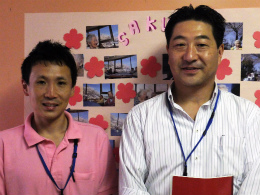 Of the facility’s approximately 40 care workers, 8 (20%) are foreign nationals (Filipino and Vietnamese). Five of them have recovered certification as care workers, having finished their training period under the EPA and passed the national exam. They have been hired as regular staff under the same conditions as Japanese workers, and are indispensable in the workplace. With the goal of having the foreign trainees pass the test in their fourth year and continue working there, the facility uses aid from Yokohama City and other sources to provide Japanese lessons to the trainees during work hours, and provide support for them to attend specialty school. Commenting on the foreign care workers, the facility head Mr. Usui says “They are friendly, very attentive to the seniors needs, and do good work. I’ve never heard any complaints from the people receiving care or their families. They are very grateful for all that the foreign workings are doing.”
Of the facility’s approximately 40 care workers, 8 (20%) are foreign nationals (Filipino and Vietnamese). Five of them have recovered certification as care workers, having finished their training period under the EPA and passed the national exam. They have been hired as regular staff under the same conditions as Japanese workers, and are indispensable in the workplace. With the goal of having the foreign trainees pass the test in their fourth year and continue working there, the facility uses aid from Yokohama City and other sources to provide Japanese lessons to the trainees during work hours, and provide support for them to attend specialty school. Commenting on the foreign care workers, the facility head Mr. Usui says “They are friendly, very attentive to the seniors needs, and do good work. I’ve never heard any complaints from the people receiving care or their families. They are very grateful for all that the foreign workings are doing.”
◆The tour will visit Yotsuba-en and speak with the facility head Mr. Usui and the foreign care workers. The tour will also observe the workers providing care to seniors.
[Tour Outline]
1. Schedule
8:00 Meet at Kannai Station
8:00-9:00 Travel by chartered bus
9:00-10:45 Yokohama Municipal Idakita Icho Elementary school
11:00-12:30 Tabunka Machizukuri Kobo volunteer group
12:30-13:15 Lunch
13:30-15:00 Icho Danchi
15:00-15:45 Travel by chartered bus
15:45-17:15 Yotsuba-en special elderly nursing home
17:15-17:45 Travel by chartered bus
17:45 Tour ends at Yokohama Station
2. Qualification: Bearer of Gaimusho Press Registration Card
3. Cost: 1,500 yen per person including lunch and transportation fee
* FPCJ will later inform the participants of methods for payment, cancellation fee etc.
4. Participants: Limited to 10 applicants.
(Only one reporter and one photographer from each company, but two participants from each TV team will be acceptable.)
5. FPCJ Contact: Ms. Yoshida (Tel: 03-3501-3405)
6. Remarks:
(1) There may be some restrictions on photographing and filming at the tour sites. Please follow the instructions of the officials on duty.
(At some places such as the elementary school and care home in particular, there will be limits on when and who it is possible to photograph or film.)
(2) Yokohama City and FPCJ will not be liable for any inconvenience, trouble or accident that might occur during the tour.
(3) Participants will have to cover a portion of the cost for this press tour, but it is not a profit-making enterprise.

